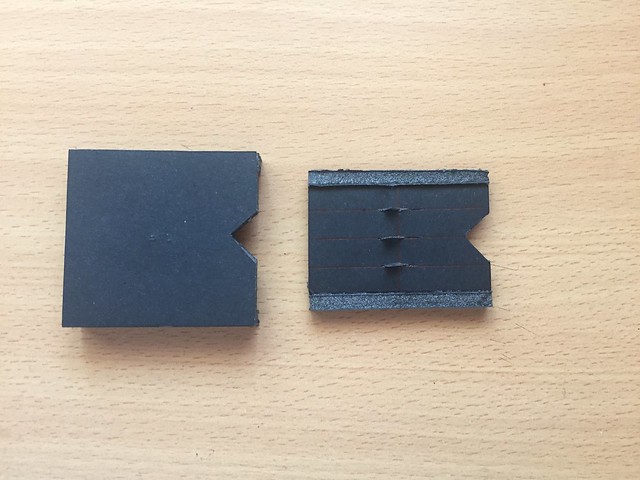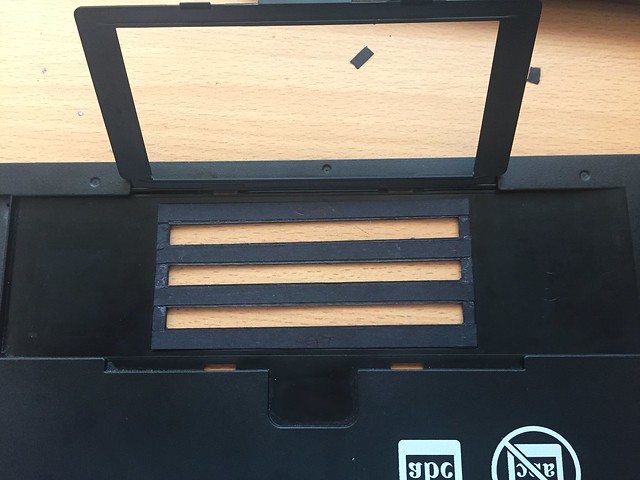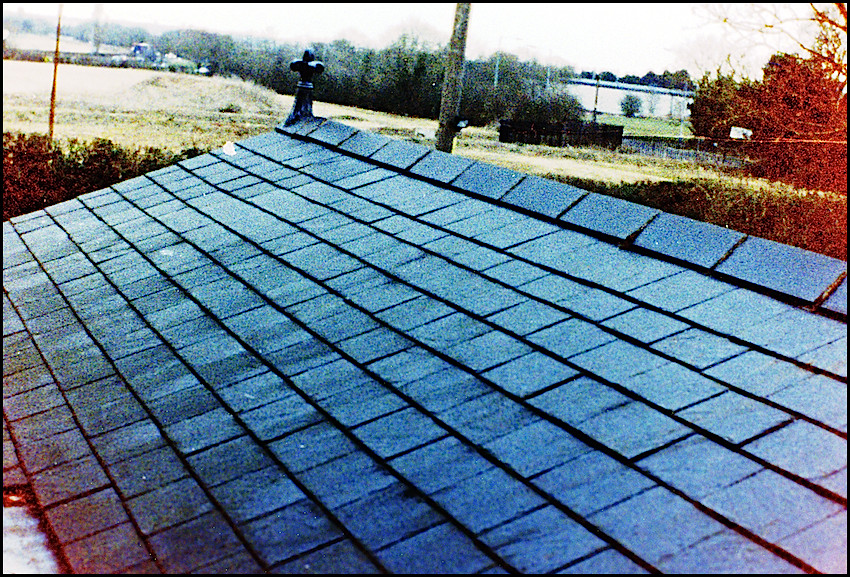- Messages
- 10,055
- Name
- Steve
- Edit My Images
- No
Well, another day, another mad idea...
I'm not entirely sure why, but I've bought a Minox B along with an original daylight developing tank, binocular attachment and a couple of unused films. Seeing as I always like a challenge, I thought it would be good to try something new which will also get me back into developing my own B&W film. I should be getting the kit on Friday so, in the meantime, I've been putting together some other parts which I'll need, including a film slitter to cut my own 9.2mm film from 135 rolls and a new adaptor to scan the film on my V500.
Film slitter:
This is made in 2 halves using 5mm foamboard

Basically, there are 3 blades bonded into the bottom half, spaced just over 9mm apart. In a dark bag, I will need to pull the leader out of the canister and press the film down over the blades.

Once they're through the film, I can fit the top half over and press it down tight. The sides of the base piece are raised by around 1mm so the film has a channel to pull through without being too tight so it scratches. Once I've pulled the film right through, I'll end up with 2 strips of sprocket holes and 2 strips of film ready to use.

According to a few different sites, these should be the length of film I need for different numbers of exposures;
15 32 cm 12.9"
30 52 cm 20.3"
36 59 cm 23.2"
50 77 cm 30.1"
I'll use a piece of string or previously cut film to get the right length inside the dark bag.

That should sort out the film needed. As the camera I bought comes with two unused film cartridges I'm planning on re-using those. I found a guy on Flickr who makes awesome looking plated brass cartridges/cases to replace the hard to find original plastic ones but at $100 per cartridge it seemed a bit steep!
I'm not entirely sure why, but I've bought a Minox B along with an original daylight developing tank, binocular attachment and a couple of unused films. Seeing as I always like a challenge, I thought it would be good to try something new which will also get me back into developing my own B&W film. I should be getting the kit on Friday so, in the meantime, I've been putting together some other parts which I'll need, including a film slitter to cut my own 9.2mm film from 135 rolls and a new adaptor to scan the film on my V500.
Film slitter:
This is made in 2 halves using 5mm foamboard

Basically, there are 3 blades bonded into the bottom half, spaced just over 9mm apart. In a dark bag, I will need to pull the leader out of the canister and press the film down over the blades.

Once they're through the film, I can fit the top half over and press it down tight. The sides of the base piece are raised by around 1mm so the film has a channel to pull through without being too tight so it scratches. Once I've pulled the film right through, I'll end up with 2 strips of sprocket holes and 2 strips of film ready to use.

According to a few different sites, these should be the length of film I need for different numbers of exposures;
15 32 cm 12.9"
30 52 cm 20.3"
36 59 cm 23.2"
50 77 cm 30.1"
I'll use a piece of string or previously cut film to get the right length inside the dark bag.

That should sort out the film needed. As the camera I bought comes with two unused film cartridges I'm planning on re-using those. I found a guy on Flickr who makes awesome looking plated brass cartridges/cases to replace the hard to find original plastic ones but at $100 per cartridge it seemed a bit steep!





 Minox B scan holder test
Minox B scan holder test Minox B scan holder test
Minox B scan holder test











